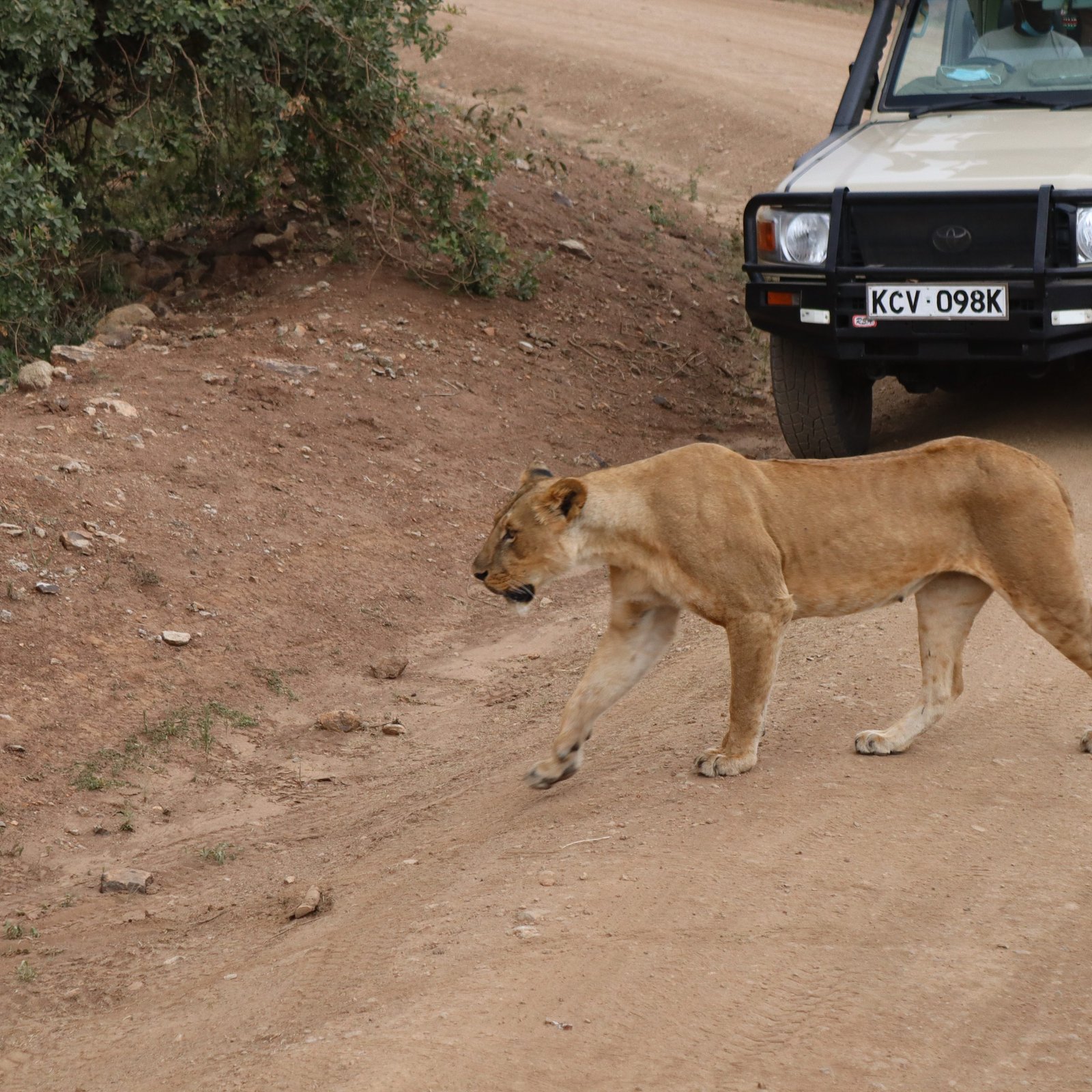Nairobi National Park stands out as a unique gem in the world of wildlife conservation. As the only national park within a major city globally, it has rightfully earned Nairobi the title of “World’s Wildlife Capital.” Located just 7 km from the heart of Kenya’s bustling capital along Langata Road, this park offers an unparalleled opportunity to immerse yourself in nature without venturing far from urban comforts.
Unique Urban-Wildlife Interface
The proximity of Nairobi National Park to the city center creates a fascinating juxtaposition of wild Africa against a backdrop of skyscrapers. This contrast offers visitors a truly unique safari experience, where you can spot a pride of lions with the city skyline in the background – a photographer’s dream come true.
Rich History and Diverse Ecosystem
Established in 1946, Nairobi National Park holds the distinction of being Kenya’s oldest national park. Despite its relatively small size of 117 square kilometers, the park boasts an impressively diverse ecosystem. The dominant landscape is grassland savanna, but visitors will also encounter wetlands, forests, and dramatic rock valleys within its boundaries.
Abundant Wildlife
Don’t let its size fool you – Nairobi National Park is home to an astonishing array of wildlife. Visitors have the chance to spot four of the “Big Five” here: lions, leopards, buffalos, and rhinos. In fact, the park is renowned as a successful rhino sanctuary, playing a crucial role in conservation efforts for these endangered species.
Beyond the big game, the park hosts over 100 mammal species and a staggering 400-plus bird species, making it a paradise for both wildlife enthusiasts and avid birdwatchers. From graceful giraffes to playful zebras, and from majestic eagles to colorful kingfishers, there’s always something exciting to observe.
Climate and Seasons
Like much of Kenya, Nairobi National Park experiences distinct seasons that can influence your visit:
- January to March: Hot and dry, ideal for wildlife viewing as animals congregate around water sources.
- April to June: Hot and wet, with lush vegetation but potentially challenging road conditions.
- July to October: Warm and wet, offering a balance of good wildlife viewing and beautiful green landscapes.
Each season has its charm, so consider your preferences when planning your visit.
Day Trip Options
Nairobi National Park’s proximity to the city makes it perfect for day trips, catering to various schedules:
- Full-Day Tour: Starting early in the morning, this option includes a picnic lunch and provides ample time to explore the park thoroughly.
- Half-Day Tour: Available in the early morning or late afternoon, these tours coincide with peak animal activity times, maximizing your chances of exciting wildlife encounters.
Essential Tips for Your Visit
- Payment: The park doesn’t accept cash. Prepare to pay via credit card, KWS smart card, or mobile money.
- Clothing: Mornings can be chilly, especially in open vehicles. Bring a jacket or windbreaker.
- Accessories: Don’t forget a wide-brimmed hat, insect repellent, sunglasses, and binoculars.
- Camera: Bring a good camera to capture the unique wildlife-meets-city views.
- Guided Tours: Consider booking with a reputable tour company for a more informative and hassle-free experience.
Beyond the Game Drives
Nairobi National Park offers more than just traditional game drives:
- Animal Orphanage: Visit this sanctuary to see and learn about rescued wildlife.
- Nairobi Safari Walk: An educational nature trail that offers closer encounters with wildlife and information about conservation efforts.
- Ivory Burning Site Monument: A powerful reminder of Kenya’s stance against ivory poaching.
Frequently Asked Questions (FAQs)
- Q: How long does a typical day trip to Nairobi National Park last?
A: A full-day tour usually lasts about 6-8 hours, while a half-day tour is around 3-4 hours. - Q: What is the best time of day to visit the park?
A: Early mornings and late afternoons are ideal, as animals are most active during these cooler hours. - Q: Can I drive my own vehicle in the park?
A: Yes, self-driving is allowed, but hiring a guide is recommended for their expertise in locating animals and navigating the park. - Q: Are there restaurants in the park?
A: There are no restaurants inside the park, but picnic sites are available. Many tour operators provide packed lunches for full-day trips. - Q: Is Nairobi National Park suitable for children?
A: Yes, the park is family-friendly and can be an excellent introduction to wildlife for children of all ages. - Q: How does wildlife viewing in Nairobi National Park compare to other Kenyan parks?
A: While smaller in size, Nairobi National Park offers excellent wildlife viewing, including four of the Big Five. Its unique urban backdrop sets it apart from other parks. - Q: Are walking safaris available in the park?
A: Walking is generally not permitted in most areas for safety reasons, but the Nairobi Safari Walk offers a safe, guided walking experience. - Q: What should I wear for a day trip to the park?
A: Wear comfortable, neutral-colored clothing and closed shoes. Layers are recommended as temperatures can vary throughout the day. - Q: Can I see the wildebeest migration in Nairobi National Park?
A: No, the famous wildebeest migration occurs in the Maasai Mara. However, Nairobi National Park has its own smaller, local animal movements. - Q: Is it possible to combine a visit to Nairobi National Park with other attractions?
A: Yes, many tour operators offer packages that combine the park with visits to nearby attractions like the Giraffe Centre or the David Sheldrake Wildlife Trust.
Nairobi National Park offers a unique opportunity to experience the wonders of African wildlife just a stone’s throw from a major urban center. Whether you’re a tourist with limited time in Nairobi or a resident looking for a quick escape into nature, this park provides an accessible and unforgettable safari experience. From its diverse ecosystems to its critical role in conservation, Nairobi National Park stands as a testament to Kenya’s commitment to preserving its natural heritage in harmony with urban development.


0 Comment